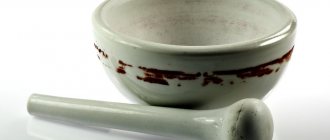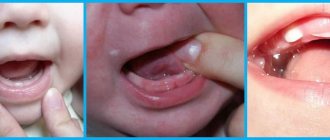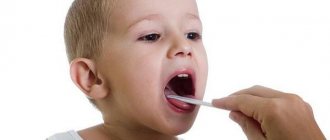Composition and type
The group of non-narcotic analgesics includes cefekon for children. The drug is produced in the form of white torpedo-shaped suppositories. This simplifies the process of using them. Some manufacturers may have a slightly creamy tint. Candles are sold in film blisters of 5 pieces. Two pieces fit into a cardboard box. Suppositories always come with instructions.
Cefekon d contains paracetamol in various quantities: 50, 100 mg, 250 mg. Thanks to this, you can choose exactly the medicine to use. An auxiliary substance that allows rectal suppositories to be given the desired shape is solid fat.
Cefekon's analogs
This drug has a fairly large number of drugs with similar effects. Let's look at the most effective of them:
| Drug name | For what diseases is it used? | Who should not use it | At what age can it be used? | average cost |
| Nurofen | For the treatment of acute respiratory diseases, viral infections. To relieve joint pain, as well as headaches, toothaches and earaches. | If the child's weight is less than 5 kg, 1st and 3rd trimester of pregnancy, heart failure, renal failure, individual intolerance to the active substance, indigestibility of fructose. | From 3 months | 170 rubles |
| Viferon | Infectious and inflammatory diseases, hepatitis of various groups. During pregnancy, it is used to treat candidiasis, vaginosis and mycoplasmosis. | Individual intolerance to the active substance | From birth | 210 rubles |
| Efferalgan | Used to reduce high body temperature in acute respiratory diseases, viral infections, after vaccination. It is used as a pain reliever for earaches, headaches, and toothaches. | Individual intolerance to the active substance, anemia, blood diseases, age up to 1 month. | From 1 month | 105 rubles |
| Panadol | As an antipyretic for acute respiratory diseases, viral infections, and also after vaccination. Relieves pain during teething. Effective for ear pain and headaches. | Newborns, children with serious kidney or liver diseases, individual intolerance to the active substance. | From 3 months | 98 rubles |
| Paracetamol | As an antipyretic for acute respiratory diseases, viral infections, and also after vaccination. Relieves pain during teething. Effective for ear pain and headaches. | Viral hepatitis, individual intolerance to the active substance, renal or liver failure. | From 3 months | 89 rubles |
Impact
The effect of the drug is based on the properties of the active substance to provide analgesic and antipyretic effects. Paracetamol blocks a special isoenzyme - cyclooxygenase in the central nervous system, which reduces signs of inflammation and pain, and also affects the centers responsible for thermoregulation processes in the human body.
When administered rectally, the active substance is absorbed in a volume of 68-88%. In the blood, the maximum concentration is reached after approximately 2-3 hours. The analgesic effect lasts for 4-6 hours, and the child’s body temperature can be normalized for at least 6 hours.
Normal body temperature in children under one year of age
The thermoregulation system is formed by the end of the baby’s first year of life.
After the mother's womb, the child undergoes adaptation to an external environment that is completely different from the mother's womb. The newborn's body learns to sense different influences, thereby forming a reaction to heat, cold and food. Immediately after birth, the following are considered normal indicators:
—
when measured in the armpit - up to 37.5°C;
—
in the mouth – up to 37.3°C;
—
with rectal measurements – up to 37.7°С
As the thermoregulatory system is established, the indicators approach the usual measurements:
- from 1 to 3 months – 36.8 – 37.7 °C
- from 4 to 6 months – 36.3 – 37.5 °C
- from 7 to 12 months – 36.0 – 37.2 °C
Indications and contraindications
Cefekon suppositories for children, the instructions for use indicate this, are intended to reduce body temperature in children aged 3 months - 12 years with acute respiratory infections and other childhood infectious diseases.
The drug is also indicated for pathological conditions that are accompanied by various pain sensations of moderate intensity. It stabilizes the condition of children with headaches, dental, and muscle pain. Suppositories are prescribed for neuralgia, as well as for injuries and burns. A single use of the product is allowed once if the body temperature rises after vaccination.
Contraindication is hypersensitivity to the active ingredient. As an exception, the medicine is used up to the age of 3 months.
The decision to use rectal suppositories to reduce body temperature and reduce pain should be made by a pediatrician. The medicine is prescribed with caution when diagnosing the following pathologies:
- Disorders of the liver and kidneys.
- Congenital hyperbilirubinemia.
- Diseases of the hematopoietic system.
- Inflammation of the rectum.
What temperature should be lowered in infants?
There are two types of fever - red and white.
With red hyperthermia, the child’s skin is pink, the palms and soles are warm, and the child’s behavior is normal. The temperature drops easily. With white fever, peripheral vascular spasm occurs. The skin turns pale, the arms and legs are cold. Body temperature can reach high values. The temperature is not going well. This condition is very life-threatening and often causes seizures. Therefore, with white fever, you need to bring down the temperature from 38.0°C. And if it’s towards night, and the temperature is clearly rising, then it’s better even with 37.8°C.
For red hyperthermia, in addition to antipyretic drugs, physical cooling methods should be actively used (wiping the baby’s back, tummy, legs and arms with a towel dipped in warm water).
With white hyperthermia, you need to act differently. First of all, you need to warm the child by rubbing the surface of the body with your hands. You can resort to physical cooling methods only after the skin has become pink and warm.
Terms of use
Tsefekon are candles for children. They are used rectally only as prescribed by a doctor. The drug is prescribed with special caution for up to a year. Suppositories should not be divided to obtain the required dose.
Before administration, it is necessary to cleanse the rectum with an enema. Suppositories can also be administered after the child has had a natural bowel movement. The dose is calculated individually. The age and weight of the child are taken into account.
It is allowed to use 10-15 mg of the active component of the drug per 1 kg of weight. The daily dose should not exceed 60 mg/kg. Repeated use is allowed after at least 6 hours. When deciding to take the drug against the background of impaired renal function, the time interval between taking the drug is increased to 8 hours.
Cefekon suppositories for children can be used to reduce fever for 3 days, and for pain relief – for 5 days. Extension of the period of use of the drug is possible only after consultation with a doctor. Additionally, it will be necessary to monitor blood counts.
How to measure a child's temperature
It is more correct to perform thermometry in a calm, preferably sleepy state.
The baby should be exposed or left only in a light vest. The duration of the procedure depends on the type of thermometer. Types of thermometers:
1.
Mercury thermometer.
This is the most accurate device. Measurements are taken in the armpit for 10 minutes, in the mouth and anus for 5 minutes. 2.
Electronic thermometer.
It is known for its fast measurement, and some models have a function to save the last result, which makes it possible to monitor temperature dynamics. 3.
Infrared thermometer.
It is easy to use. They need to swipe their forehead and get the exact numbers. There is also an ear model of such a thermometer, but it will show an unreliable result in case of inflammation of the auricle. 4.
Non-contact thermometer - for measuring without touching.
It is optimal for use in infants, especially during sleep. 5.
Dummy thermometer. A device for babies sucking a pacifier. The result will appear on the screen in just one minute.
Negative reactions of the body
When using the drug, negative reactions of the child’s body may occur. Most often they are expressed by malfunctions of the digestive system. This may include abdominal pain, nausea and vomiting.
In case of hypersensitivity to the active ingredient, there is a risk of allergies. It manifests itself
- Rash.
- Itching.
- Hives.
With prolonged use of suppositories, severe negative reactions of the body from the hematopoietic system are observed. Anemia occurs most often, but other pathological conditions that threaten the child’s health are also possible.
An overdose of the drug is dangerous. Its symptoms are pale skin, constant nausea that causes severe vomiting and abdominal pain. Within 12-48 hours, against the background of an overdose, signs of liver failure appear, which is life-threatening.
If you suspect an overdose, you should urgently call an ambulance. After cleansing therapeutic procedures, symptomatic treatment and strict monitoring of blood counts are prescribed.
What to do if your child has a fever?
Does your baby have a fever? Then you can’t hesitate - you need to urgently consult a doctor. Especially if it is accompanied by:
- rash;
- neck muscle tension;
- abdominal pain;
- vomiting.
But don’t panic: fever is typical for most common viral respiratory infections and high temperatures - about 40 degrees. This is how our body responds to infection. The pediatrician will simply examine the child and select the right treatment for him, taking into account the severity of the disease.
Special instructions
Before using Cefekon suppositories, you must carefully study the instructions for use. It is imperative to ensure that the amount of active substance used does not exceed the permissible daily allowance in accordance with the age and weight of the child.
If minimal side effects occur during treatment with the drug, you should stop using it and inform your doctor. It is important to exclude other paracetamol-containing drugs during treatment to avoid accidental overdose.
What to do with high values
1.
Maintain a favorable temperature in the room of 20 - 22°C and ventilate more often.
2.
Dress the child in light clothing.
3.
Drink plenty of warm drinks (breast milk, water).
If the baby is more than 6 months old, then give compote, herbal tea, fruit juice. 4.
Avoid active games.
5.
If the temperature rises significantly, you need to give an antipyretic drug based on paracetamol (Efferalgan, Panadol suspensions, Cefekon suppositories) or ibuprofen (Nurofen suspension).
Contraindications
Children under 1 month, hypersensitivity to paracetamol, chronic alcoholism. The drug should be prescribed with caution in diseases of the blood system, severe and liver dysfunction , genetically determined enzymatic absence of glucose-6-phosphate dehydrogenase.
Cefekon D - suppositories during pregnancy and lactation can be prescribed taking into account the benefits and risks for the pregnant woman and the child (fetus). Studies have not established the teratogenic, mutagenic and embryotoxic effects of paracetamol.
How to decide whether to lower the temperature?
The answer is simple, regardless of the cause of the temperature. It doesn’t matter whether it is associated with an infection or a post-vaccination reaction, with teething or other reasons.
We lower the temperature when the child feels unwell.
There is nothing so beneficial about a rise in temperature that you have to endure it, and nothing so harmful that you need to take medicine while feeling normal. Therefore, when deciding on the issue of fever reduction, we look not at the thermometer, but at the child. If he feels bad, he’s breathing heavily, lethargic, his muscles or head hurt - you even lower 37.8. But if you can't get a child at 38.8 to get the medicine into him, then there's no need for the medicine.
Pharmacodynamics and pharmacokinetics
Pharmacodynamics
Children's Cefekon has an analgesic and antipyretic effect. In the central nervous system, the drug causes a blockade of cyclooxygenase, thereby affecting the pain center and thermoregulation system. At the site of inflammation, the effect of paracetamol on cyclooxygenase is neutralized by cell peroxidase, which significantly reduces the anti-inflammatory effect. Cefekon does not negatively affect the gastrointestinal mucosa and water-electrolyte metabolism, that is, sodium water retention in the body is not observed.
Pharmacokinetics
The drug has high absorption and is quickly absorbed through the mucous membrane. Easily overcomes the BBB. Has high bioavailability. Distributed mainly in body fluids. Protein binding is insignificant (less than 10%). Metabolized in the liver. The maximum concentration of the drug in the blood occurs within 10-60 minutes after taking it. It is excreted by the kidneys in the form of inactive metabolites (sulfates and glucuronides).
The child has a high temperature. What to do?
High temperature is a protective reaction of the body that enhances the immune response.
In our body, the hypothalamus is responsible for the mechanism of temperature regulation.
This tiny area in the head is made up of a huge number of nerve cells. They regulate the activity of the human cardiovascular, endocrine, digestive and excretory systems.
The hypothalamus is responsible for sleep patterns, wakefulness, hunger, thirst, the reproductive system, pleasure, expression of emotions, social interaction and regulates body heat exchange.
Normally, the hypothalamus maintains the temperature of a healthy person within 36-37°C. Through receptors on the skin, it reacts to cold or heat, as well as to any changes in blood temperature.
As soon as the body is attacked by viruses or bacteria, our cells release pyrogens - substances that increase the temperature.
A person begins to shiver - this is how the muscles contract in the hope of warming up, and the blood vessels in the skin narrow to reduce heat loss.
That is why an increase in temperature in both adults and children is accompanied by:
- lethargy - active movement leads to heat loss
- trembling - muscles contract to keep the body warm
- pallor - due to spasm of peripheral vessels
- desire to wrap yourself up warmer
Why is the temperature rising?
The anterior portion of the hypothalamus contains heat-sensitive nerve cells that respond to any changes in blood temperature and impulses from heat/cold receptors on the skin.
Under the influence of bacteria and viruses, our cells release pyrogens - substances that increase temperature. When the thermoregulation center “decides” that there is a need to maintain a higher body temperature than usual, the body begins to “think” how to achieve this.
You can do this in two ways:
1. Increased heat generation (try to warm up).
2. Reduced heat transfer (prevent heat from escaping from the body).
Then the following happens. Due to impulses running along the muscle fibers, a person begins to shiver - this is how the muscles contract in the hope of warming up. At the same time, the vasomotor center receives information that it is necessary to stop heat loss. To do this, the blood vessels in the skin “block” (spasm), and heat transfer decreases. Bottom line: the hypothalamus is “happy” that the body temperature remains around 39.0°C.
This results in a standard febrile child. He:
- sluggish - the hypothalamus does not allow active movement, because this will lead to heat loss
- trembles - muscle contractions increase heat generation
- pale - pale skin occurs due to spasm of peripheral vessels
- tries to wrap himself up warmer
But the body is very delicately structured - it will not allow you to overheat to a critical point. Therefore, when the temperature set by the hypothalamus is exceeded, the vessels in the periphery dilate, the sweat glands are activated and heat transfer increases.
Now the child turns red, sweats profusely and tries to quickly throw off the blanket.
The high body temperature will be maintained until the cause of its increase (infection, tumor, etc.) is eliminated. After the cause disappears, the hypothalamus sets the parameters for a new normal temperature.
How to act in case of fever?
First of all, don’t worry and don’t rush to bring down the temperature. It is important to remember that this is a natural protective reaction of the body. The child’s immune system begins active synthesis of protective substances only at temperatures above 38.5°C.
First of all, you need to assess the child’s overall well-being, his behavior and appearance. This will help you make an informed decision for further action.
Fever is always accompanied by other symptoms.
Regardless of the temperature and age of the baby, there are symptoms that require immediate examination by a pediatrician:
- atypical behavior - high-pitched crying, drowsiness, moaning
- Strong headache
- convulsions
- disturbance of consciousness
- lowering blood pressure
- persistent vomiting or diarrhea
- abdominal pain
- sore throat or ear
- inability to bend the head to the chest (this causes sharp crying)
When such conditions occur, antipyretic therapy alone is not enough. It can even cause harm. A timely examination by a pediatrician and a thorough diagnosis are necessary.
It is important to consider the age of the child with a fever.
It's better not to put off visiting a doctor:
- for a baby less than 3 months old at a temperature of 38.0°C or more
- from 3 months to 3 years - over 38.0°C for 3 days or over 39.0°C
- at a temperature above 38.6°C for 3 days in children over 3 years of age
- temperature above 39.4°C
- in the presence of chronic diseases
- lack of improvement in health when the temperature drops
- reappearance of fever after normalization of temperature
- lack of tears when crying, rare urination, dry skin and mucous membranes
- refusal to eat and drink
Regardless of the age of the child, it is necessary to bring in an examination if the following symptoms occur:
If mom or dad thinks that something is wrong with the child, it is better to play it safe and get examined as soon as possible.
When is it necessary to lower the temperature?
1. The child, regardless of the height of the temperature, does not feel well (the main task is to alleviate his condition).
2. A child with chronic somatic diseases (pathologies of the heart, lungs, brain or nervous system).
If a child older than 3 months has a rectal temperature below 38.9°C and feels well, it is not advisable to lower the temperature. It is important to understand that an increase in body temperature is a natural protective reaction of the human body. The immune system begins active synthesis of various protective substances only at a temperature of about 39°C.
In any case, if you are not sure about the need for antipyretic therapy, you should consult a pediatrician.
How to lower the temperature?
It is important to understand that taking antipyretics is aimed at relieving the child’s discomfort. It does not shorten the duration of the disease or reduce the risk of complications.
At home, children can lower their temperature with only two drugs - paracetamol (from 3 months) and ibuprofen (from 6 months).
All antipyretic drugs should be dosed not according to age, but according to the baby’s weight.
A single dosage of paracetamol is calculated at 10-15 mg/kg of weight, ibuprofen 5-10 mg/kg of weight.
If the antipyretic is in the form of a suspension of ibuprofen (in 5 ml - 100 mg), paracetamol (in 5 ml - 120 mg), then you need to divide the amount calculated by weight in mg by the amount of the drug in 1 ml.
Ibuprofen can be taken 3-4 times a day, paracetamol - 4-5 times.
Let us note one important nuance. Do not lower the temperature with Ibuprofen in a child with chickenpox (chickenpox). This drug may make the disease more severe.
How to give an antipyretic?
There are several rules for taking antipyretic drugs:
1. Give an antipyretic no more than 5 times a day.
2. Do not lower the temperature of a child under 3 months without being examined by a doctor.
3. Do not give combined antipyretic drugs, for example ibuprofen + paracetamol.
4. Carefully read labels and instructions for medications.
5. Shake the bottle before giving the drug to the child.
6. Before taking the drug, make sure the correct dosage. A small dosage will result in reduced effectiveness, and an overdose can cause various side effects.
7. Do not use a teaspoon for calculations (different spoons have different capacities). To measure, it is better to give preference to a measuring spoon or dosage syringe.
8. Record in a notebook when and how much of the drug was given to the child.
9. Observe the child’s body - for some, Ibuprofen is more suitable, and for others, Paracetamol.
10. When lowering the temperature, do not try to reach 36.6°C. If, after taking an antipyretic, the temperature drops by 1-1.5°C, and the child becomes active and cheerful, the goal has been achieved.
11. If after taking an antipyretic the temperature does not decrease, a pediatrician’s consultation is required.
How to reduce temperature?
Since this question is asked only by parents of young children, I will not write about medications for older children.
There are only three home remedies for kids to reduce their fever: the physical method, paracetamol (acetaminophen) and ibuprofen. If the child's arms and legs are warm, he needs to be undressed, you can hang him with wet towels, wipe him with water at room temperature, wrap his head in a wet scarf, or even put him in a cool shower. Whether or not to give medicine is your choice. Depends on your level of panic and your child's behavior. Small children cool down well on their own; sometimes it’s enough just to free them from their clothes. If your hands and feet are cold—vasospasm has begun—the physical method is not recommended, and the only option left is medication.
Price Tsefekon D, where to buy
The price of Tsefekon suppositories for children 0.25 g No. 10 varies within 60 rubles per package. The price of Tsefekon D suppositories 0.05 g No. 10 is 25 rubles, and 0.1 g No. 10 is 50 rubles per package. You can purchase the drug in most pharmacies in Moscow and other cities.
- Online pharmacies in RussiaRussia
- Online pharmacies in UkraineUkraine
- Online pharmacies in KazakhstanKazakhstan
ZdravCity
- Cefekon D rectal suppositories.
100 mg 10 pcs. JSC "Nizhpharm" 52 rub. order
Pharmacy Dialogue
- Tsefekon D suppositories 250 mg No. 10Nizhpharm JSC
56 RUR order
- Tsefekon D suppositories 100 mg No. 10Nizhpharm JSC
50 rub. order
- Tsefekon D suppositories 50 mg No. 10Nizhpharm JSC
26 RUR order
show more
Pharmacy24
- Cefekon D for children 0.25 g N10 suppositories VAT "Nizhpharm", Nizhny Novgorod, Russian Federation
39 UAH. order - Cefekon D for children 0.1 g No. 10 suppositories VAT "Nizhpharm", Nizhny Novgorod, Russian Federation
45 UAH order
PaniPharmacy
- Cefekon D suppository Supp. cefekon D 0.25g No. 10 Russia, Nizhpharm
41 UAH order
- Cefekon D suppository Supp. cefekon D 0.1g No. 10 Russia, Nizhpharm
48 UAH order
show more









